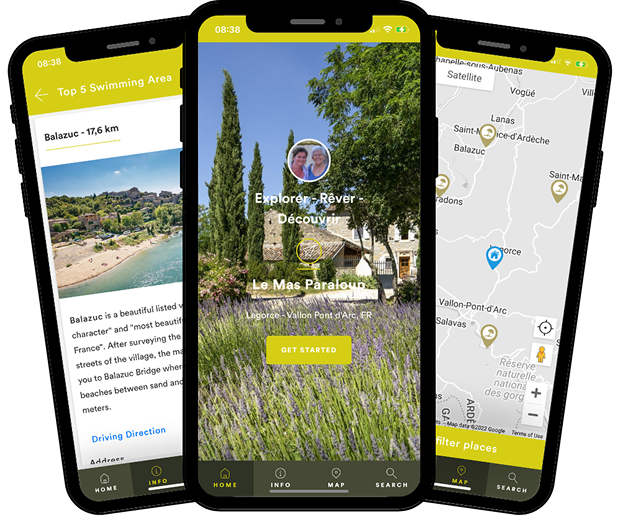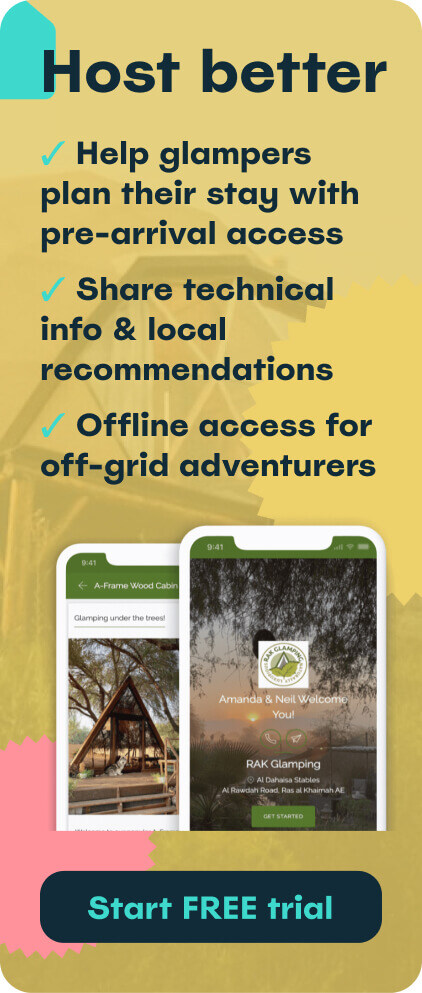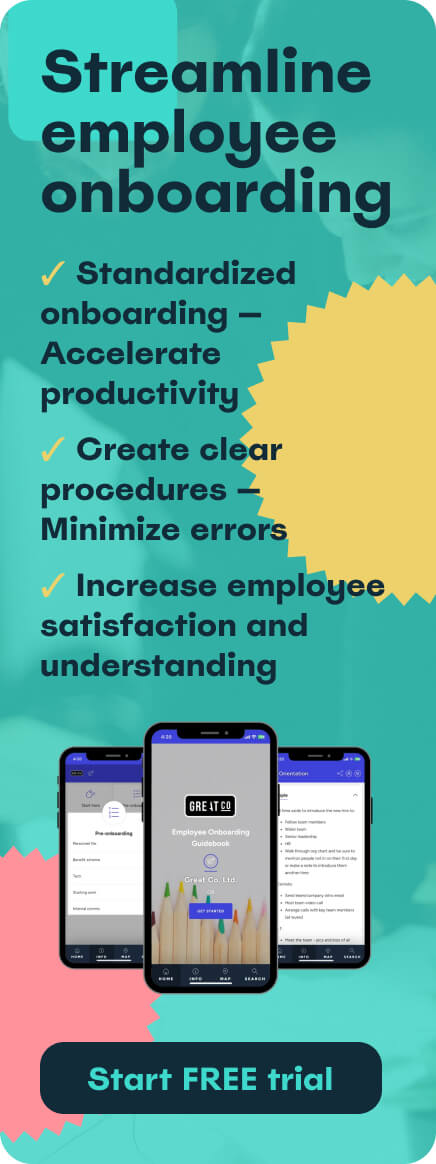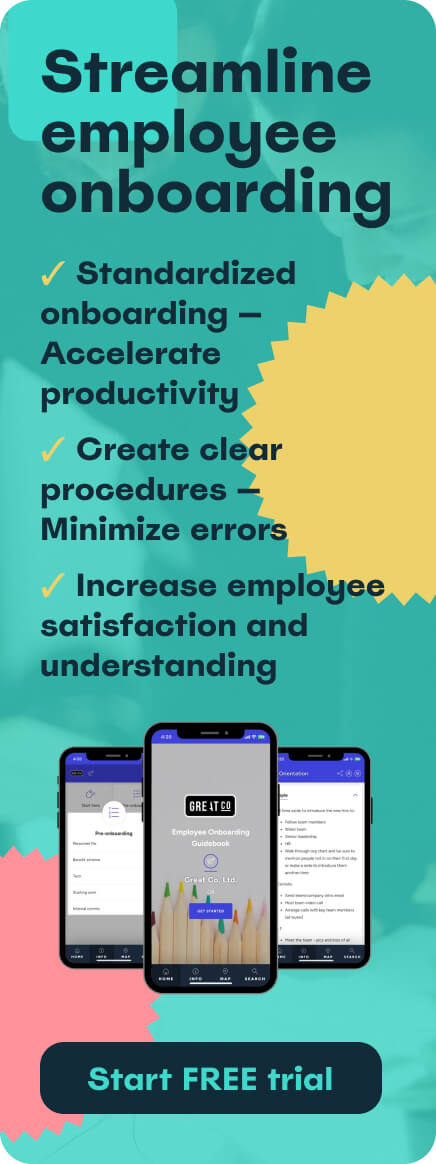The allure of escaping to nature, without sacrificing comfort, has propelled glamping into a booming industry. But before you dive into this exciting venture, it’s crucial to understand the financial landscape. This blog will delve into the intricacies of glamping business startup costs and evaluate its profitability. We'll cover everything from land acquisition to marketing, providing you with a comprehensive guide to launching your own successful glamping site.
Here's a quick overview of what we'll cover:
- How profitable is a glamping business?
- What are the startup costs for a glamping business?
- Example of initial startup costs and returns
- How to secure initial funding for a glamping startup
- 10 tips to reduce glamping startup costs
How profitable is a glamping business?
Glamping has emerged as a highly profitable niche in the hospitality sector. According to a report by Grand View Research, the global glamping market size was valued at £2.1 billion in 2022 and is expected to grow at a compound annual growth rate (CAGR) of 10.9% from 2023 to 2030. This growth is driven by increasing demand for unique travel experiences and the rise of eco-tourism.
Source: Grand View Research
- In popular tourist destinations, well-managed glamping sites can achieve occupancy rates of 60-80% during peak seasons.
- Luxury glamping accommodations often command premium nightly rates, significantly higher than traditional campsites or standard hotel rooms.
- The global glamping market is experiencing continuous growth, with increased demand for experiential travel.
It's important to remember that profitability varies greatly. A small, rustic glamping site in a remote location will have different income potential than a luxury glamping resort near a major city.
| Glamping type | Average nightly rate | Average occupancy rate (peak season) |
Estimated annual revenue (per unit) |
| Basic tent glamping | £80-£150 | 60-70% | £15,000-£25,000 |
| Yurt/Bell tent glamping | £150-£250 | 70-80% | £25,000-£40,000 |
| Luxury cabin/pod glamping | £250-£400+ | 80-90% | £40,000-£70,000+ |
These figures are estimates and can vary significantly based on location, amenities, and marketing efforts.
What are the startup costs for a glamping business?
Understanding the startup costs is crucial for financial planning. These costs can vary widely, depending on the scale and luxury level of your glamping site. Here’s a breakdown of the key expenses:
- Land acquisition or lease
- Site development and landscaping
- Permits and licensing fees
- Property down payment
- Utilities and installation
- Furnishing and equipment
- Insurance and tax
- Staffing and training
- Security and internet
- Booking and management systems
- Operational and maintenance
- Marketing and branding
Want to start a glamping business but don’t know where to start? Check out our handy glamping business plan, which includes a free checklist and real-world examples.
Land acquisition or lease costs
The cost of land is a significant factor. Purchasing land can be a substantial investment, while leasing offers lower upfront costs but ongoing expenses. Factors influencing land costs include location, size, and zoning regulations.
- Rural land prices vary significantly, with costs ranging from £5,000 to £50,000+ per acre, depending on location and accessibility.
- Leasing land can cost between £1,000 and £10,000+ per year, depending on the size and location of the plot.
Site development and landscaping costs
Preparing the site for glamping involves clearing land, installing pathways, and creating aesthetically pleasing surroundings. Landscaping costs can range from basic ground preparation to elaborate gardens and outdoor amenities:
- Basic site clearing and grading: £1,000-£5,000
- Pathways and access roads: £500-£2,000 per path
- Landscaping (planting, features): £2,000-£10,000+
Permits and licensing fees
Obtaining the necessary permits and licenses is essential for legal operation. These fees vary by location and can include planning permissions, environmental permits, and business licenses:
- Planning permission fees: £500-£2,000+
- Environmental permits: £200-£1,000+
- Business licenses: £100-£500+
Property down payment
If purchasing land or existing property, a down payment is required. This can be a significant upfront cost, typically ranging from 10% to 20% of the property value.
- Example: For a £200,000 property, a 10% down payment is £20,000
Utilities and installation costs
Connecting to utilities such as water, electricity, and sewage is crucial. Connecting to utilities such as water, electricity, and sewage is crucial. Off-grid solutions like solar panels, rainwater collection, or rainwater diversion systems can reduce long-term costs while also appealing to eco-conscious travellers, though they require upfront investment:
- Electricity installation: £1,000-£5,000+
- Water and sewage installation: £2,000-£10,000+
- Solar panel installation: £5,000-£15,000+
Furnishing and equipment costs
The cost of furnishing and equipping your glamping units depends on the level of luxury. Basic furnishings include beds, seating, and lighting, while luxury units may feature hot tubs, kitchenettes, and high-end decor:
- Basic furnishings (per unit): £1,000-£3,000
- Luxury furnishings (per unit): £5,000-£15,000+
- Outdoor furniture and amenities: £500-£2,000+ per unit
Insurance and tax costs
Insurance is essential for protecting your investment. Costs vary based on coverage and location. Taxes include property taxes and business taxes, which vary by jurisdiction:
- Business insurance: £500-£2,000+ per year
- Property taxes: varies significantly by location
- Business taxes: dependent on business structure and income.
Staffing and training costs
If you plan to hire staff, consider the costs of wages, training, and benefits. Staffing needs depend on the size and complexity of your operation:
- Wages: minimum wage to £30,000+ per year, per employee
- Training: £100-£500+ per employee
Security and internet costs
Ensuring the safety of your guests and providing reliable internet access are essential. Security measures include CCTV, lighting, and secure entry systems:
- CCTV installation: £500-£2,000+
- Internet installation and monthly fees: £50-£100+ per month
Booking and management systems
Efficient booking and management systems streamline operations and enhance the guest experience. These systems can include online booking platforms, property management software, and payment processing:
- Booking platform fees: varies by platform, typically a percentage of bookings
- Property management software: £50-£200+ per month
Pro tip: discover how to empower guests with tech.
Operational and maintenance costs
Ongoing operational and maintenance costs include cleaning, repairs, and upkeep of the glamping site. Regular maintenance ensures the longevity and quality of your accommodations:
- Cleaning supplies and services: £100-£500+ per month
- Maintenance and repairs: £200-£1,000+ per month
Marketing and branding
Effective marketing and branding are crucial for attracting guests. This includes creating a website, social media presence, and online listings. Touch Stay digital guidebooks are a powerful tool for enhancing the guest experience and driving repeat bookings. By providing guests with comprehensive information about your glamping site and the surrounding area, you can reduce questions and improve satisfaction. This can be a great tool to improve user experience, which in turn improves marketing.
- Website development: £500-£2,000+
- Social media marketing: £100-£500+ per month
- Online listing fees: Varies by platform
Pro tip: discover how glamping influencers can help boost your gaping business online.
Example of initial startup costs and returns
Let’s consider an example: a glamping site with three luxury yurts.
- Land lease: £5,000 per year
- Site development: £10,000
- Permits and licenses: £5,000
- Furnishing and equipment: £15,000 per yurt (£45,000 total)
- Utilities and installation: £15,000
- Marketing and branding: £5,000
- Total initial investment: £85,000
If each yurt is rented for £250 per night and achieves an average occupancy rate of 70% during a six-month season, the estimated annual revenue is:
- Revenue per yurt: £250 x 0.70 x 180 nights = £31,500
- Total revenue: £31,500 x 3 = £94,500
After deducting operational costs (estimated at 30% of revenue), the annual profit is:
- Annual profit: £94,500 x 0.70 = £66,150
In this scenario, the initial investment could be recouped in approximately 1.3 years.
How to secure initial funding for a glamping startup
Securing funding is a critical step in launching your glamping business. Here are some options:
- Personal savings: using your own savings allows for greater control and avoids interest payments.
- Bank loans: traditional bank loans can provide substantial funding, but require a solid business plan and good credit.
- Investors: attracting investors can provide capital, but you may need to offer equity or profit sharing.
- Crowdfunding: platforms like Kickstarter and Indiegogo allow you to raise funds from a large number of individuals.
- Government grants: some government programs offer grants for small businesses and tourism initiatives.
10 tips to reduce glamping startup costs
Minimising startup costs is essential for maximising profitability. Here are 10 tips to help you save money:
- Lease land instead of buying: leasing reduces upfront costs and allows for flexibility.
- Use off-grid solutions: solar panels and rainwater collection can reduce utility costs.
- Buy used furniture and equipment: sourcing second-hand items can significantly reduce furnishing costs.
- DIY where possible: performing tasks like landscaping and basic construction yourself can save on labour costs.
- Start small and scale up: begin with a few glamping units and expand as demand grows.
- Utilise free marketing tools: leverage social media and online listings to reduce marketing expenses.
- Partner with local businesses: collaborating with local attractions and service providers can reduce marketing and operational costs.
- Offer off-season discounts: attracting guests during off-peak seasons can increase revenue and utilisation.
- Implement efficient booking systems: streamlining bookings reduces administrative costs.
- Use Touch Stay digital guidebooks: reduce the need for staff to answer simple questions, and increase user experience, leading to more repeat bookings and better reviews. Learn more about Touch Stay’s digital guidebooks designed especially for glampsites.
By carefully planning and managing your startup costs, you can increase the profitability of your glamping business.

Ned
Ned has clocked up over 11 years in digital marketing and comms, with a strong focus on creating engaging content for a range of brands and agencies. When he’s not writing, he can be found digging for records, peering through his telescope at the night sky, or onboard his local lifeboat where he volunteers as a crewmember.
Be the first to know!
Join our newsletter for early access to:
- ✅ Free guides
- ✅ Pro tips & tricks
- ✅ Time saving tutorials
- ✅ Latest blog posts
- ✅ Checklists & templates















